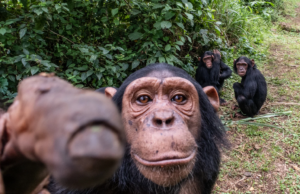Trafficking and bushmeat: danger to Tai National Park (WITH VIDEOS)

By Serge K. Soiret, GAP correspondent in West Africa, from Ivory Coast
Every Saturday at the edge of River Cavally, the residents flow from all the villages nearby the park (Para, Karié, Béoué, Djouroutou etc) to supply the activities of bushmeat. Liberian Poachers go in a boat to the edge of the river in Ivorian territory to sell to residents who look for products to their restaurants and for others to satisfy their requirement of animal protein.
The carcass of the animals arrive to the consumer dissimulated in bags, baskets, paperboards and any other container and the product is transported by bicycle or motorbike. After the sale, the Liberians with the money gained buy, in Ivorian territory, first need products they do not have access to, such as, the manioc, banana etc. These Liberians, who live on the other side of the River Cavally and are installed in the forest in camping, live in misery and the situation got worse with the war that Liberia went through in 1990. As a solution they hunt to buy what they need to live.
The meat of chimpanzees is rare on this market; to have some, it is necessary to place a special order, according to people who were questioned. This transborder flow of bushmeat should force West African states to harmonize their policy of conservation of the biodiversity.
For information: hunting is prohibited in Ivory Coast since 1974 according to a decree dated of February 20. But hunting is practiced in a clandestine way. At TaïNational Park, which has a surface of 457.000 ha, no forestry development takes place. Two zones are arranged, respectively, for the eco tourist activities (Djouroutou Sector) and for science research (Taï Sector).
A series of five videos that show images described at this article is available at the site (click here)

 Español
Español
 Português
Português








